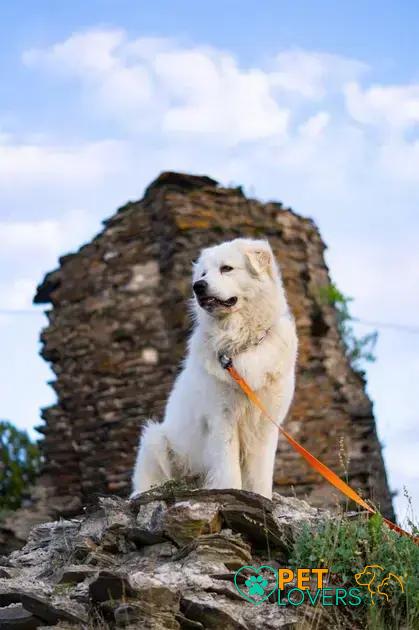Curiosities about the Kuvasz uncover a world of fascinating facts about this majestic breed. Known for their loyalty and protective nature, Kuvasz dogs have an intriguing history and possess distinctive traits. Whether you are considering adding a Kuvasz to your family or simply want to learn more, this guide delves into the origin, characteristics, and care of this remarkable breed.
Origin and History of the Kuvasz
The Kuvasz is an ancient breed with a rich history that dates back thousands of years. Originating in Hungary, the breed is believed to have Asian roots, tracing back as early as the time of the Huns and Magyars. These nomadic tribes used the Kuvasz for guarding livestock and protecting their camps due to its strength and keen instincts.
During the Middle Ages, the Kuvasz gained significant popularity as a royal guard dog. Hungarian nobility highly valued this breed for its loyalty and protective nature. King Matthias Corvinus of Hungary was particularly fond of Kuvasz dogs and is said to have kept them as royal companions and protectors.
The name ‘Kuvasz’ itself has Turkic origins, meaning ‘armed guard of the nobility,’ reflecting the breed’s esteemed role in society. For centuries, Kuvasz dogs have been revered for their abilities to safeguard livestock, estates, and families against predators and intruders.
Despite the challenges the breed faced during periods of war and turmoil, the Kuvasz has endured and remains a treasured breed to this day. Their resilience and versatility have allowed them to adapt to various roles, from being loyal family pets to effective working dogs in many parts of the world.
Unique Traits and Characteristics
The Kuvasz is renowned for its distinctive white coat, which is thick and double-layered, providing excellent protection against harsh weather. This breed’s coat is both beautiful and functional, requiring regular grooming to maintain its pristine appearance.
One of the most striking characteristics of the Kuvasz is its intelligence and independence. This breed is known for being highly trainable, yet they often exhibit a spirited independence, making them best suited for experienced dog owners who understand their unique needs.
The Kuvasz is also known for its loyal and protective nature. Historically used as a guardian of livestock, they have a natural instinct to protect their family. This protective trait makes them excellent guard dogs, but they require early socialization to ensure they are well-behaved and friendly with strangers.
Moreover, the Kuvasz boasts remarkable physical strength and endurance. Their muscular build and agile movement are a testament to their heritage as working dogs. These traits make them excellent companions for active families who can provide them with ample exercise and mental stimulation.
Caring for Your Kuvasz
Kuvasz dogs have specific care needs to ensure they remain healthy and happy. Because they are large and active, they require regular exercise. Daily walks, playtime in a secure yard, or hikes can help meet their physical needs.
Grooming is another essential aspect of caring for your Kuvasz. Their thick double coat needs routine brushing to prevent mats and tangles. Aim for at least two to three grooming sessions per week. During shedding seasons, you may need to brush them daily.
Nutrition is also crucial. Provide a balanced diet with high-quality dog food that meets their nutritional needs. Monitor their weight to avoid obesity, which can lead to other health problems.
Regular health check-ups with a veterinarian are vital. Ensure they receive vaccinations, dental care, and preventive treatments for parasites. Kuvasz are prone to certain genetic conditions, so keep an eye out for any signs of hip dysplasia or hypothyroidism.
Training and socialization should start early. Kuvasz dogs are known for their protective nature, so it’s important to expose them to different environments, people, and other animals. This helps them develop into well-rounded adults.
Finally, provide your Kuvasz with a loving and stimulating environment. Mental enrichment through puzzle toys and positive reinforcement training can keep them happy and engaged.

